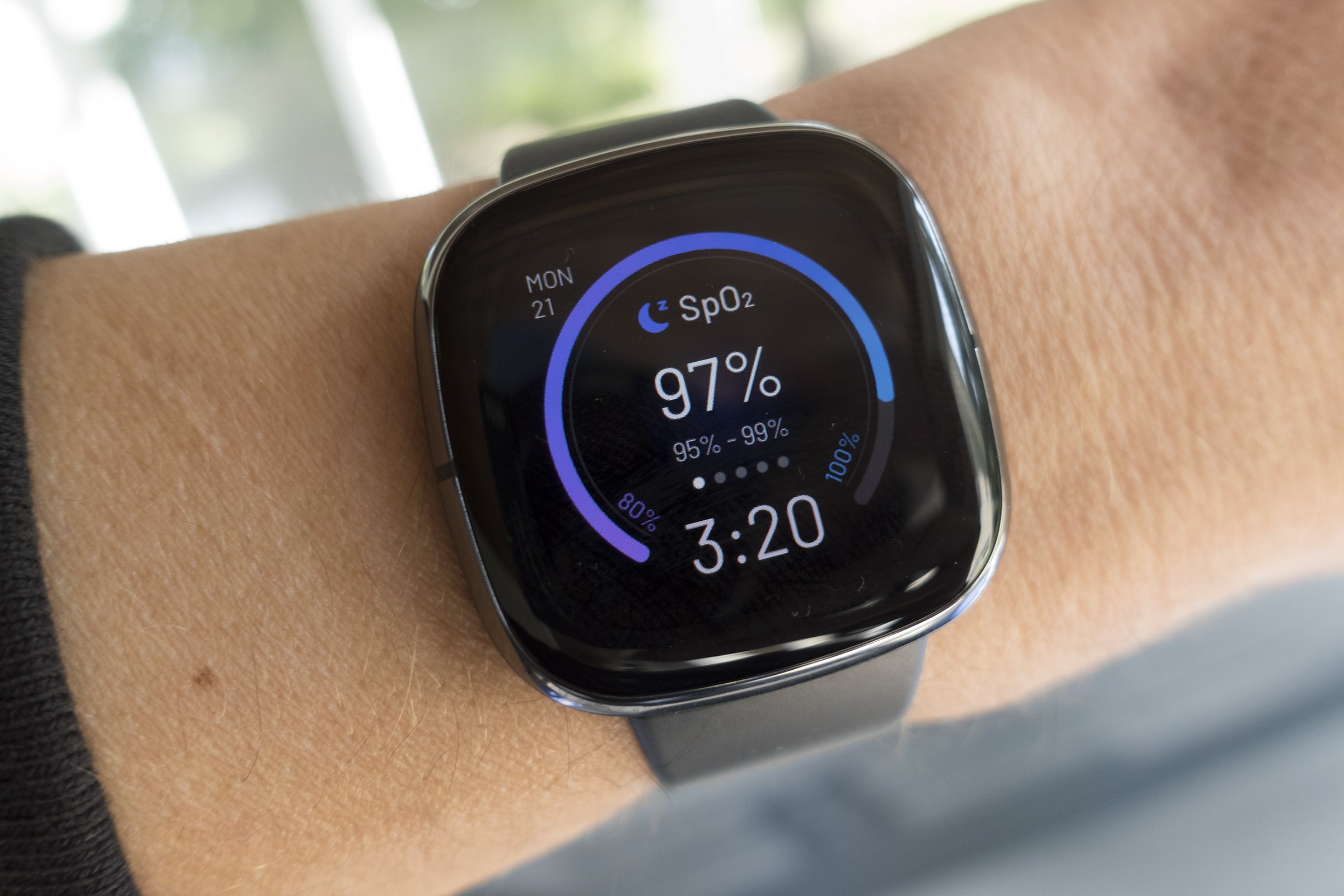


“When you talked about the wearability, so one of our lead creative designers, he uses the term ‘pajamas for your wrist,’” says Yang. Yang says Fitbit worked hard to make the Sense comfortable, even at night. You can do sleep tracking on Apple Watch as well - especially with third-party apps - but you’re gonna to need to remember to take your watch off and charge it during the evening. And that makes sleep tracking very doable on the Fitbit Sense. While honestly, I don’t think I could sleep with a large and hard wearable on my wrist, some do. Screenshot of the technology inside the Fitbit Sense. less if I do more workouts than usual and it’s actively gathering data for longer. My Series 5 gets about 18 hours of battery life, typically. I charge my Apple Watch nightly, which means I can’t possibly use it for sleep tracking. And so if you have to take it off every day to charge it, there’s a good chance that you’re gonna forget, you’re gonna leave it at home, it’s not on at night.” “I tell people the most important feature of a wearable is that it’s worn.

It might ask you for a perception of your stress level, for instance, and then might suggest some options to reduce stress.Īnother major difference is battery life. Fitbit Sense senses the increased electrical conductance on your skin, and then helps you manage your mood. That’s your body’s EDA response, if you will, and so our sensor can detect that.”ĮDA is electrodermal activity, and it increases if you sweat, which may happen if you’re feeling more stressed. if you’re up in front of a big group giving a speech, or you’re about to do something you’ve never done before. “These are like tiny changes in the electrical activity on your skin . “We have a new world’s first sensor that measures electrodermal activity,” he told me. Screenshot of the Fitbit Sense measuring skin temperature. On top of that, we added the ability to alert you if your resting heart rate is abnormally high or abnormally low.”įitbit Sense’s third area of focus is a world first, Yang says. “We can get multiple paths going and do better error rejection, and make sure we get our most accurate heart reading. uses multiple paths of light sensors, of LED sensors to be able to get a better accurate read, especially as you’re exercising, as the watch moves around on your wrist,” Yang says. But Yang says the Fitbit went above and beyond a simple ECG. The heart health component is a bit of a catch-up: Apple Watch has had heart monitoring and ECG (electrocardiogram) support for some time now. That’s data you won’t get from an Apple Watch. The health one is fairly obvious during Covid-19, and as my wife pointed out, women's ovulation cycle includes temperature variations. This is likely helpful in terms of workout intensity, but it also provides health and cycle insights. The Fitbit Sense includes a thermometer which tells you how hot you are.


 0 kommentar(er)
0 kommentar(er)
